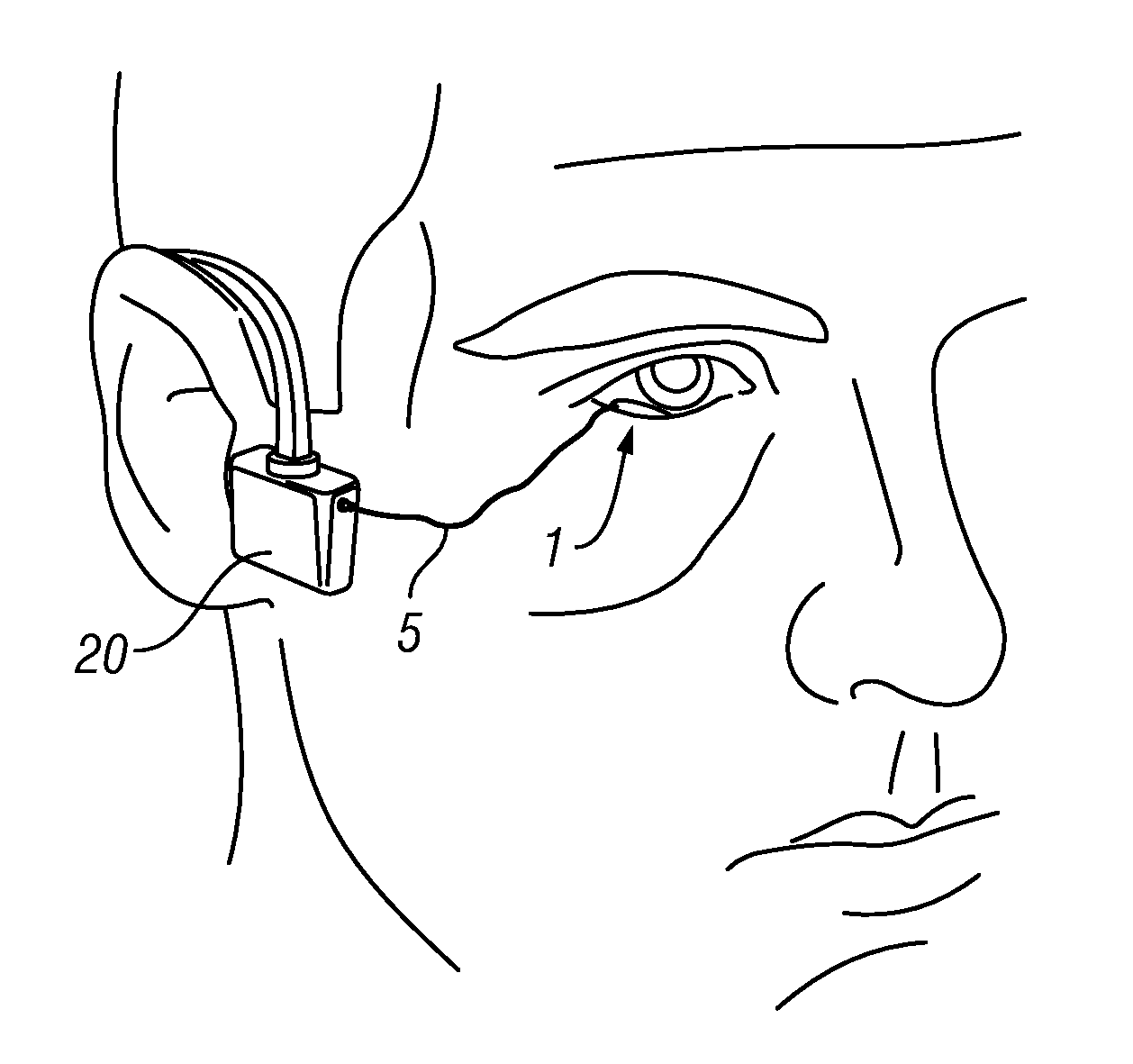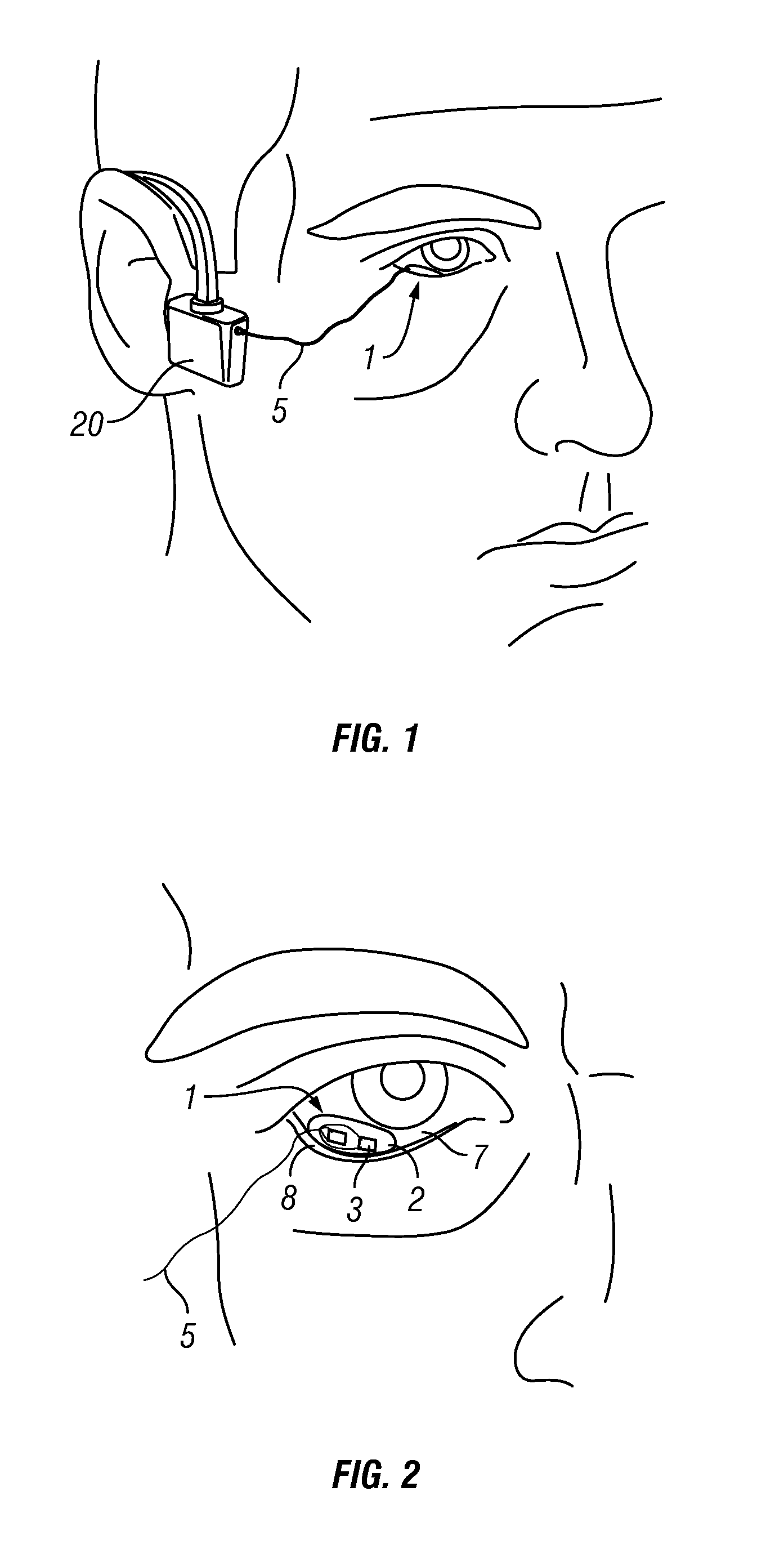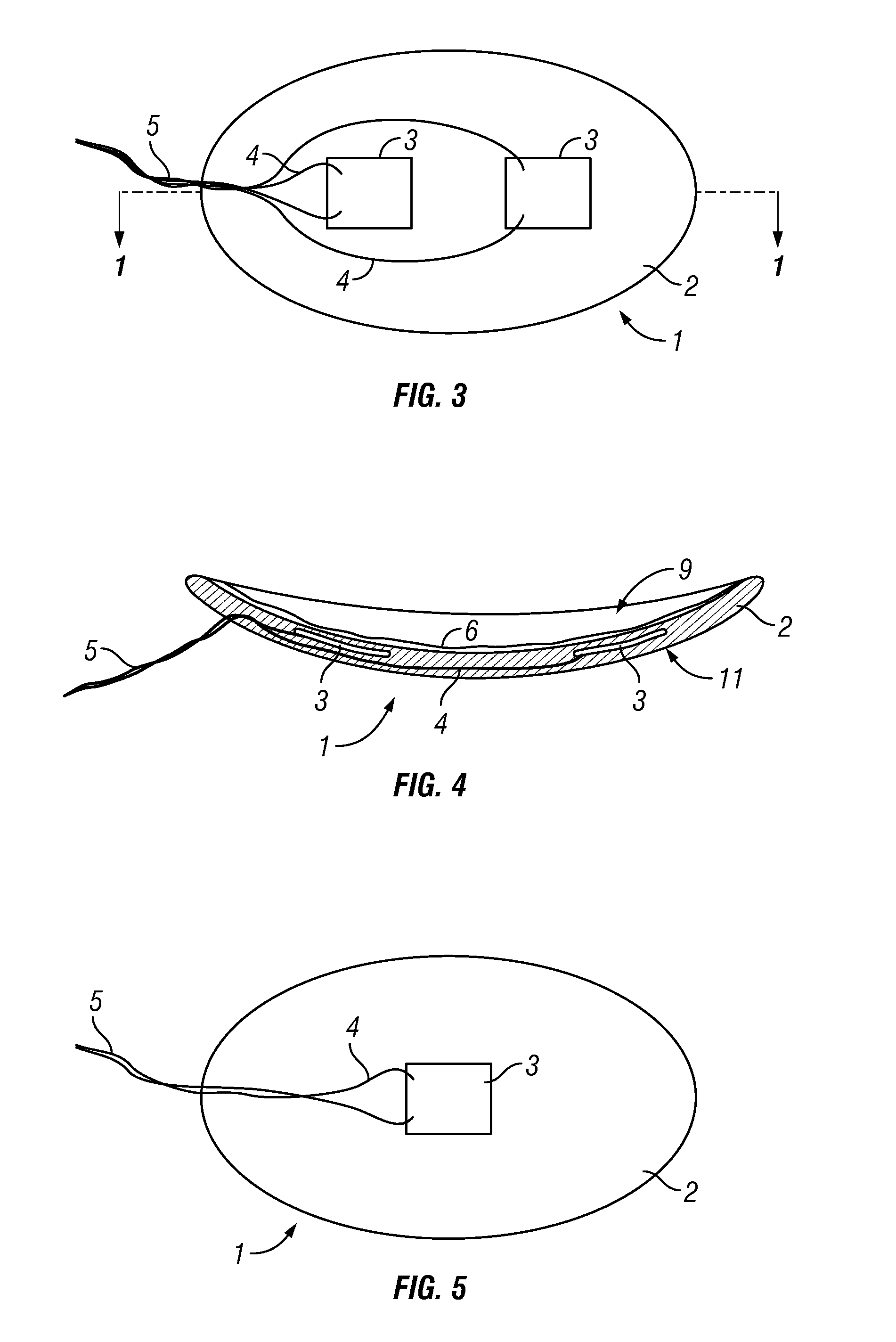Photokinetic ocular drug delivery methods and apparatus
a biologically active substance and ocular drug technology, applied in the field of photokinetic delivery of biologically active substances, can solve the problems of visual impairment, eye drops may not be an effective method for administering drugs of larger molecular weight into the eye, and the minimally invasive technique only allows for less than 5%, so as to achieve less cost.
- Summary
- Abstract
- Description
- Claims
- Application Information
AI Technical Summary
Benefits of technology
Problems solved by technology
Method used
Image
Examples
example 1
Methotexate Transcleral Delivery
[0120]Materials and Methods
[0121]A traditional “up and down” vertical Franz cell skin perfusion apparatus as described above was adapted and used for this sclera tissue permeation model. The absorption spectrum of the test drug, methotrexate (MTX, a drug used in the treatment of primary ocular lymphoma) was determined. Two wavelengths of light were selected of this facilitated permeation study. Samples of the Franz recipient solution were taken at 15, 30 and 60 minutes of photokinetic exposure and passive controls and analyzed by HPLC.
[0122]Instruments and Materials
[0123]Franz cells (PermeGear, Inc, Bethlehem Pa.) having an 11.28 mm diameter permeation area, 1.0 cm2 were used in the MTX experiment. A photokinetic ocular drug delivery (PODD)-modified Franz cell testing device was configured so that it accommodated the placement of LEDs within the donor chamber. The cells were placed within an aluminum block heater 35.5° C. on a magnetic stir bar setup ...
example 2
Delivery of Insulin
[0154]Two pertinent ocular drugs were selected for testing the hypotheses. Methotrexate (MW=454 Daltons) is used for the treatment of primary ocular lymphoma. Insulin (MW=5808 Daltons, 5.808 kDa) and insulin like growth factors have been implicated as a possible preventive treatment for diabetic retinopathy. The transscleral delivery of methotrexate has been described in Example 1, above.
[0155]A traditional “up and down” vertical Franz cell (11.28 mm diameter permeation area, 1.0 cm2) perfusion apparatus (FIG. 6) was adapted and used for this sclera tissue permeation model. PODD modified Franz cell testing device was configured so that it accommodated the placement of the selected discreet wavelength LEDs within the donor chamber. Discrete LEDs at 351 nm and 370 nm were used for the MTX study and 405 nm and 450 nm for the insulin study (peak emitting wavelengths at ±10 nm at the 50% radiance output). The LEDs were driven by a square wave pulse generator set at 24 ...
example 3
Transcleral Insulin Delivery of High Molecular Weight Drugs
[0170]Using the same procedures as set out above, and the apparatus of FIG. 6, scleral tissue permeation determinations of methotrexate over a short time period, as well as the scleral tissue permeation of vancomycin (1 mg / mL), insulin, Insulin Like Growth Factor-1 (IGF-1), Avastin™ (bevacizumab; Genentech, San Francisco, Calif.), and hyaluronic acid (HA) were conducted. High molecular weight hyaluronic acid (5,000 Da+in size) was selected as a test compound because the sodium salt of hyaluronic acid (SH) is a high molecular weight biopolymer made of repeating disaccharide units of glucuronic acid and N-acetyl-β-glucosamine, and which is present in the vitreous body and the aqueous humor. Hyaluronic acid is a natural polymer which, due to its water retaining capability, binds to cell membranes and can therefore be considered to be a putative vehicle for controlled ocular delivery (Durrani, et al., Int. J. Pharm., Vol. 118 (2...
PUM
| Property | Measurement | Unit |
|---|---|---|
| Fraction | aaaaa | aaaaa |
| Fraction | aaaaa | aaaaa |
| Mass | aaaaa | aaaaa |
Abstract
Description
Claims
Application Information
 Login to View More
Login to View More - R&D
- Intellectual Property
- Life Sciences
- Materials
- Tech Scout
- Unparalleled Data Quality
- Higher Quality Content
- 60% Fewer Hallucinations
Browse by: Latest US Patents, China's latest patents, Technical Efficacy Thesaurus, Application Domain, Technology Topic, Popular Technical Reports.
© 2025 PatSnap. All rights reserved.Legal|Privacy policy|Modern Slavery Act Transparency Statement|Sitemap|About US| Contact US: help@patsnap.com



